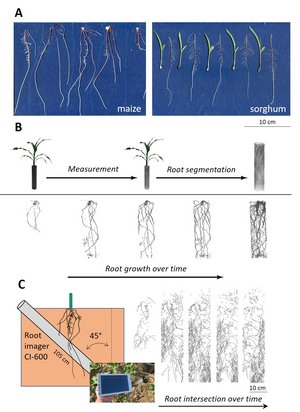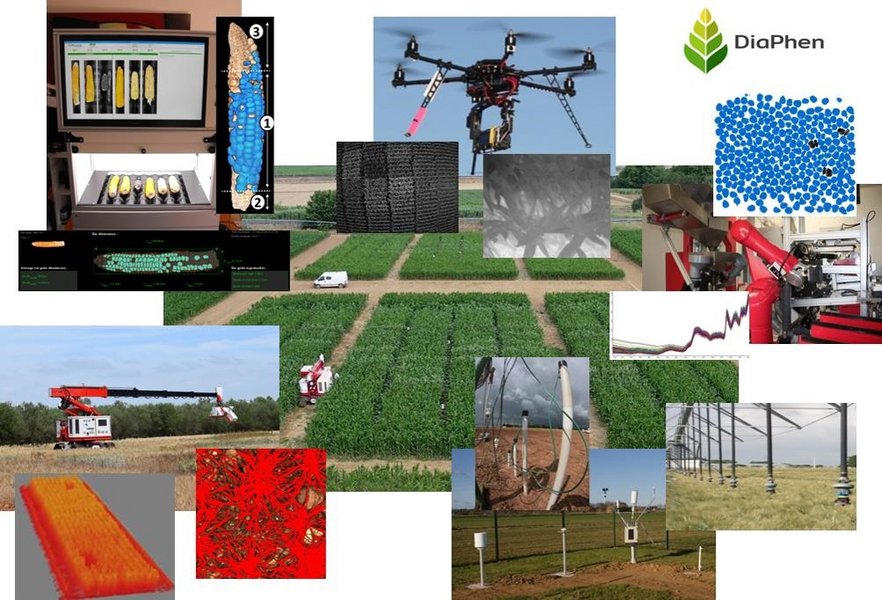Research
Research articles



Measuring root traits and probing photosynthesis
Optimizing root system architecture could enhance the crop capacity for soil exploration and, thus, nutrient and water acquisition.
A current challenge for plant breeding is the limited ability to phenotype the root organ. A lack of methods for non-invasively imaging root organs has restricted the understanding of the genetic basis of root system architecture.
C4FUTURE will employ 2D and 3/4D screens in laboratory environments, as well as rhyzotron systems in the field (Fig. above).
Such root phenotype assessment may speed up for breeders, the delivery of genotypes with desired root morphological features.
Bioenergetic model
Probing photosynthesis: Leaf optical characteristics, heat dissipation and chlorophyll fluorescence.
As mineral and water stresses impact on photosynthesis, this paragraph deals with the fundamental mechanisms underling the methods to monitor photosynthetic activity.
Developing high troughput remote sensing tools based on leaf or canopy optical indicators, is particularly relevant for precision agriculture and for detection of plant stress.
Light striking a leaf can be reflected, transmitted or absorbed (and potentially used for photosynthesis).
The energy absorbed in the chloroplast is transferred to the electron transport reaction chain through two photosystems (PS II and PS I).
At the level of the PS II, energy losses take place as heat dissipation or red fluorescence emission (Fig. above).
Figure:
Biosensing methods A. Bioenergetic model. Light stiking the antenna of PSII is reflected (RFL) or absorbed (ABS). Absorbed energy can be dissipated (DI) as heat/red fluorescence or used to drive photochemistry (TP) and eventually, the electron transport after QA (ET) and further to PSI (RE). B. The reflectance curve in the visible and near-infrared range. C. The chlorophyll a fluorescence transient shows two kinetics (Kautsky): the fast increase O-P (plotted in a Log scale in the insert) followed by the slow decay P-T.
Novel technological tools to phenotype plants
The deployment of soil water status sensors combined with a water balance modeling approach is proposed to characterize the water scenarios felt by plants.
The plant growth, leaf architecture and photosynthetic activity will be monitored via acquisitions of airborne images delivered by drones. The DiaPHEN platform located at INRAE Maugio-Montpellier, France, is equipped with imaging systems carried by drones and GPS-equipped vehicles with arms carrying cameras and LiDAR systems.
Imaging will be based on:
- Visible imaging to estimate light interception by plants which is a major determinant of canopy photosynthesis
- Multispectral cameras to assess a range of spectral indices
- Thermal infrared camera which provides an indirect measurement of leaf temperature, linked to plant transpiration
- LiDAR sensors for 3D plot reconstruction and plant architecture characterization.
Yield components will be measured on samples of mature ears using an imaging device and analysis tools allowing access to morphological features of individual ears and kernels.
A device coupling imaging and NIRS will also provide morphometric and biochemical information on grain samples at harvest.